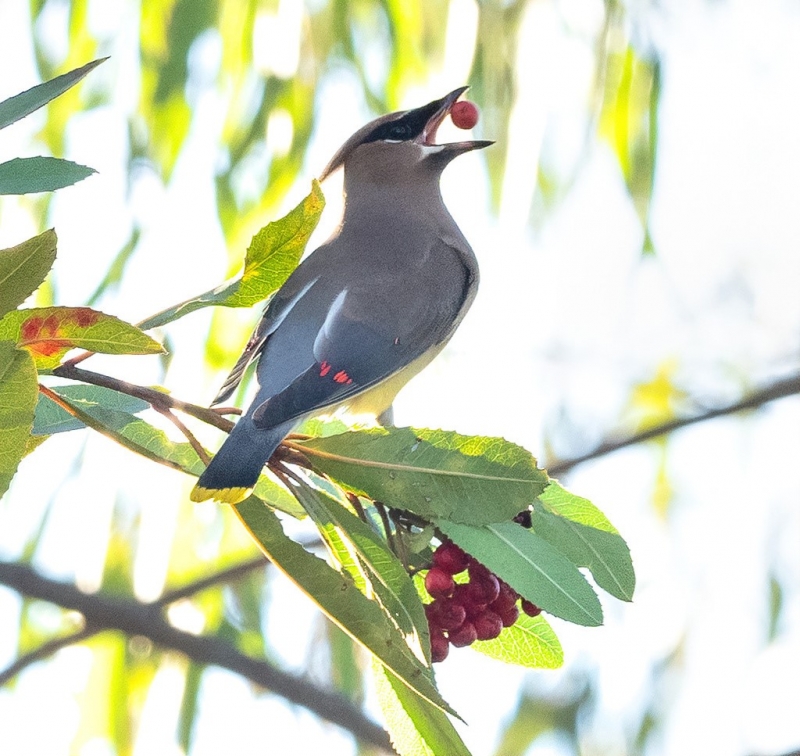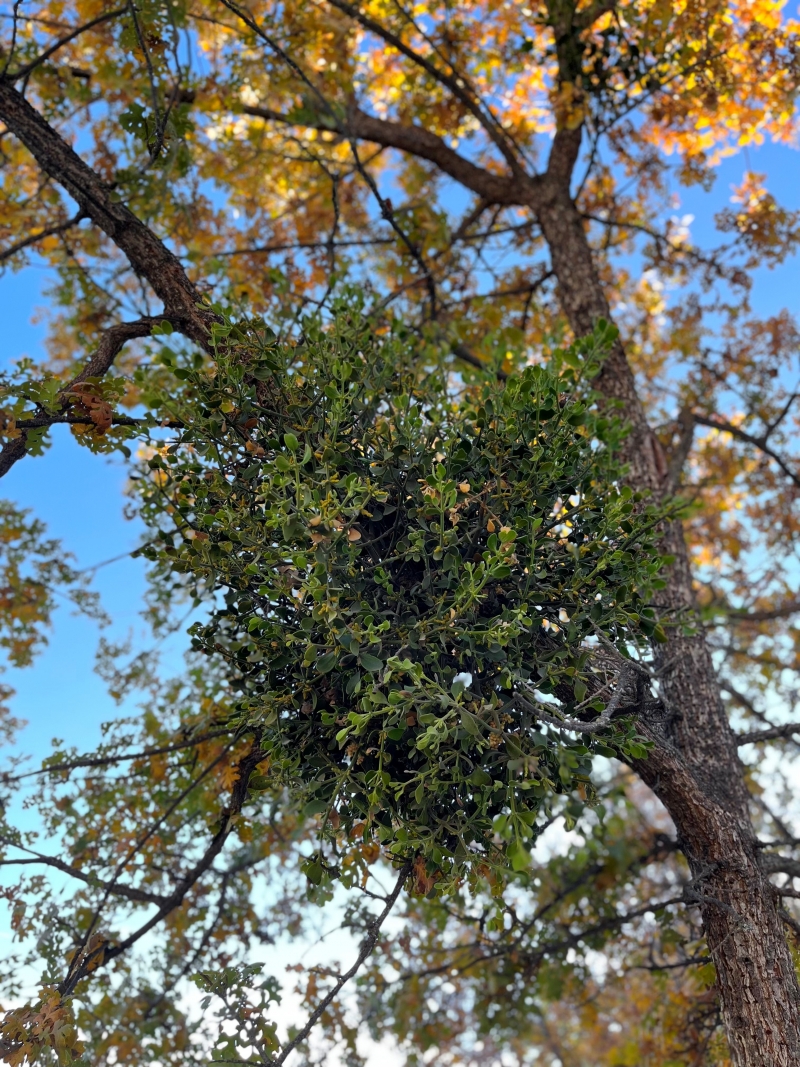Yuletide Flora: Celebrate the Season with Some Festive Native Plants
This is a cross-posting from the UCSB Current.
While it may not be a classic winter wonderland, the South Coast does boast several festive flora for the winter season. Among them are California holly and the region’s two genera of mistletoe—and a bonus mentioned later on.
In 1862, Scottish musician Thomas Oliphant first invited us all to “deck the halls with boughs of holly,” and the plant’s association with early winter likely stretches further into the recesses of history. While there are no true hollies native to California, the state does have Toyon, which is often called California holly. Its toothed leaves and clusters of bright red berries certainly warrant the moniker.
Toyon thrives throughout the state in habitats ranging from oak and riparian woodlands to chaparral and sage scrub. It often grows around eight feet tall, but can reach heights of 30 feet under certain conditions. A member of the same group as apples and pears, Toyon is a common sight in neighborhoods, parks and trails around Santa Barbara.
Like many plants in the region, Toyon has adapted to California’s wildfire regime. “If it gets burned it won’t phase the plant at all,” said Gregory Wahlert, manager of the UC Santa Barbara herbarium. “It’s just going to sprout right back.”

A Cedar Waxwing gobbles up a Toyon berry near Lake Los Carneros Park. Photo by SBBon26 via iNaturalist
Unlike most plants in its range, Toyon flowers in summer and retains its iconic berries through winter until early spring. “So it’s a fresh food for wildlife that comes on at a conveniently disjunct time,” said Wayne Chapman, the nursery manager at UCSB’s Cheadle Center for Biodiversity and Ecological Restoration. The berries are a favorite of the Cedar Waxwing and American Robin.
Legend has it that the plant’s red berries gave the community of Hollywood its name. And while this may make for a charming story, the neighborhood actually owes its name to an estate in Illinois. Still, the shrub was adopted as the official native plant of the city of Los Angeles.
The people of California have a rich history with Toyon, stretching long before European Americans noticed its similarity to holly. The Chumash people would roast and mash toyon berries—or qwe’ in most dialects—which they ate alone or added to other dishes.
Toyon wood is also quite strong, and one of several hard-wooded shrubs used by the Chumash, as Jan Timbrook of the Santa Barbara Museum of Natural History details in her book Chumash Ethnobotany, the people of Santa Barbara ventured to sea in canoes made with Toyon tools to fish with Toyon hooks and spears. They used Toyon bows, often with Toyon arrows, to hunt game. They fashioned the wood into utensils, reamers, wedges, awls and needles, hide scrapers and digging sticks. They made games from it as well as ceremonial items. Toyon was generally not the only material used to make these items, but its variety of uses demonstrate that California holly is truly a versatile plant.

A leafy Phoradendron mistletoe sprouts from an oak limb at Sedgwick Reserve. Photo by Harrison Tasoff
Like holly, mistletoe has an enduring place in Christmastime tradition. And before it was a romantic winter gesture, the plant featured prominently in pagan mythology. There are two different genera of mistletoe native to Southern California. Species in Arceuthobium—commonly called dwarf mistletoes—have small, scale-like leaves. Meanwhile those in Phoradendron have broad leaves and look much more like mistletoes from Europe.
While historical Chumash accounts make little mention of mistletoes, it appears at least two Phoradendron species were used as contraceptives, abortifacients and to treat menstrual issues—“a subject which most Chumash consultants were understandably reluctant to discuss,” Timbrook noted.
Mistletoe’s biology cuts a striking contrast to the romantic image it gained in Europe. The plants are actually hemiparasites; although they perform their own photosynthesis, they depend on a host tree for water and nutrients. Indeed, they often grow high in the canopy, connected to the ground only by their host’s vascular system.

Phoradendron leucarpum, also called American or Oak Mistletoe, retains its elliptic green leaves even as it’s host tree drops its own leaves in preparation for winter. Photo by Harrison Tasoff
“They have a sticky seed that birds have to literally wipe off their butts after eating the fruit,” Chapman said, “and that is how it gets put right onto the tree where it eventually grows.” The seed’s gumminess ensures that it stays put on tree branches, rather than fall to its doom on the ground. A somewhat inglorious life history for such a symbol of romance.
As a bonus, Santa Barbara county hosts the southernmost natural grove of Coast Douglas-fir, a favorite Christmas tree species. An isolated stand grows in the Purisima Hills, north of Lompoc, some 90 miles southeast of the species’ southern limit in Monterey County’s Santa Lucia Mountains. Scientists believe that this grove may be a relic from the last ice age.
This year, rather than pine for a snowy, Dickensian Christmas, take time to appreciate the beautiful botanicals that the warm Californian climate has to offer.
Top photo: Its bright red fruit lend Toyon the moniker “Christmas berry.” Photo by Harrison Tasoff






0 Comments
Post a Comment